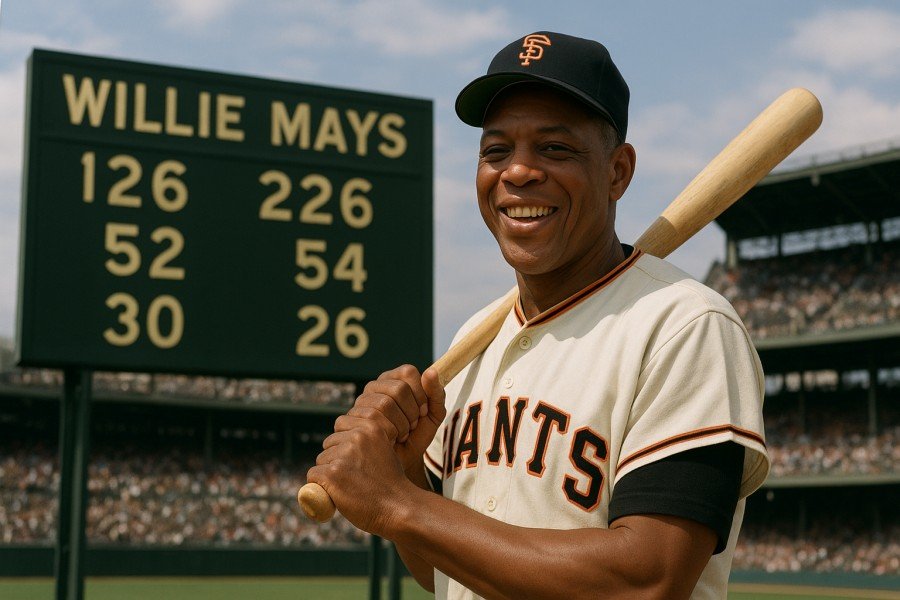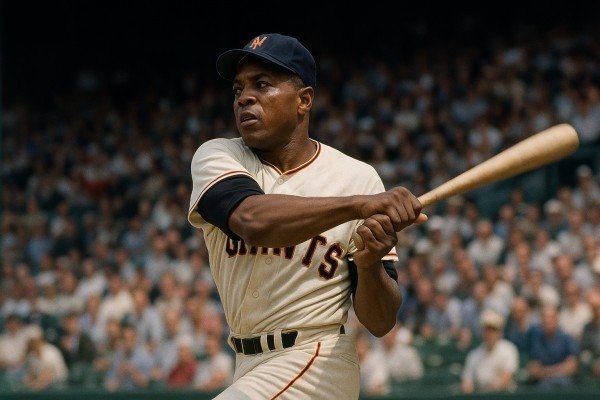When baseball fans talk about the greatest players in history, Willie Mays is always near the top of the list. Known as “The Say Hey Kid,” Mays had a career that spanned over two decades and included incredible defensive plays, unmatched consistency at the plate, and one of the most legendary careers in Major League Baseball history. One of the most fascinating ways to measure his greatness is by looking at where his home runs were hit. Tracking Willie Mays career home runs by park not only highlights his skill but also provides a glimpse into how stadiums, dimensions, and conditions shaped his offensive legacy.
The Longevity of Willie Mays
Willie Mays made his debut with the New York Giants in 1951 and continued playing until 1973, finishing his career with the New York Mets. Over that span, he hit 660 home runs, placing him among the all-time leaders. What makes Mays’s total remarkable is that he played during an era that was not dominated by inflated offensive numbers. His ability to hit for power while maintaining consistency across multiple ballparks is what makes his home run record so valuable to study.
Polo Grounds: The First Stage of Greatness
Mays’s early years came at the historic Polo Grounds in New York, the home of the Giants until their move to San Francisco in 1958. The Polo Grounds was unique, with extremely short distances down the foul lines but a cavernous center field. This design rewarded pull hitters but punished drives to straightaway center. Despite those challenges, Mays managed to make the park his own.
From 1951 until 1957, Mays belted 126 home runs at the Polo Grounds. Many of these showcased his ability to adjust to a park’s dimensions and use his speed to stretch hits that might have died in deeper fields. The Polo Grounds may be remembered most for his legendary over-the-shoulder catch in the 1954 World Series, but it was also a place where his power became a national story.
Candlestick Park: Adapting to the Winds
When the Giants moved west, San Francisco’s Candlestick Park became Willie Mays’s new home. Unlike the Polo Grounds, Candlestick was notorious for swirling winds and cold night games, conditions that made hitting home runs a serious challenge.
Even with those difficulties, Mays hit 226 home runs at Candlestick Park, the most of any stadium in his career. What stands out here is his adaptability. Rather than being deterred by conditions, Mays adjusted his approach at the plate, pulling pitches into the left-field bleachers or driving balls through the stiff ocean winds. This ability to thrive in a park that suppressed offense further proves why Mays is considered one of the most complete hitters in baseball history.

Visiting Ballparks: Proving It Wasn’t Just Home Field
A true measure of greatness is how a player performs on the road. For Mays, his power numbers away from his home stadiums tell an equally impressive story. He homered in 24 different parks throughout his career.
For instance, Mays hit 52 home runs at Dodger Stadium, proving he could excel even in a pitcher-friendly environment against one of his team’s fiercest rivals. At Wrigley Field, with its friendly winds blowing out, he hit 54 long balls. He also found success in venues like Connie Mack Stadium in Philadelphia and Forbes Field in Pittsburgh, both of which were difficult places to hit for power.
The spread of Mays’s home runs across the country showcases that his numbers weren’t inflated by one ballpark but were instead the product of pure skill and adaptability.
Comparing Eras: Why His Numbers Still Stand Out
Modern fans sometimes wonder how players from the 1950s and 1960s would compare to today’s stars. In Mays’s case, the argument tilts strongly in his favor. He played in larger stadiums, against dominant pitching, and in conditions that weren’t designed for offense. Despite all that, his 660 home runs remain one of the highest totals in MLB history.
When comparing him to more recent stars, it’s important to remember that Mays achieved his totals without the advantages of today’s training regimens or hitter-friendly parks. His production across multiple parks proves that he wasn’t just a product of his home environment.
Legacy of Willie Mays’s Home Runs
Looking at Willie Mays career home runs by park is more than just a numbers exercise. It tells the story of a player who adjusted to every challenge and succeeded no matter the conditions. Whether it was the quirky Polo Grounds, the windy nights at Candlestick, or road games against rival franchises, Mays proved that true greatness travels with the player.
His career is often celebrated alongside his contemporaries like Hank Aaron and Mickey Mantle, but the unique spread of his home run locations sets him apart. Baseball historians and fans alike see his numbers as a reflection of both consistency and versatility, two traits that define the essence of a Hall of Famer.
Willie Mays in Pop Culture and Beyond
Even outside of baseball circles, Willie Mays remains a cultural icon. His story is not just about numbers but also about perseverance, adaptability, and the excitement he brought to fans across the nation. From appearing in interviews to being referenced in documentaries, his influence extends beyond the ballpark.
Much like how modern personalities such as Chrisean Rock command attention in entertainment today, Mays commanded it on the field in his time. Both reflect how larger-than-life figures can captivate audiences in different arenas, whether in sports or entertainment.
Final Thoughts
Willie Mays’s 660 career home runs tell a story of endurance, adaptability, and greatness across multiple decades and parks. By analyzing his totals by stadium, we see a player who not only mastered the game but thrived under varied conditions that would have challenged lesser athletes.
His home run distribution is a reminder that true greatness isn’t about favorable conditions but about talent that shines anywhere. Baseball may evolve, stadiums may change, and new stars will rise, but Willie Mays’s record across ballparks ensures that his name will always be part of the sport’s most celebrated history.








